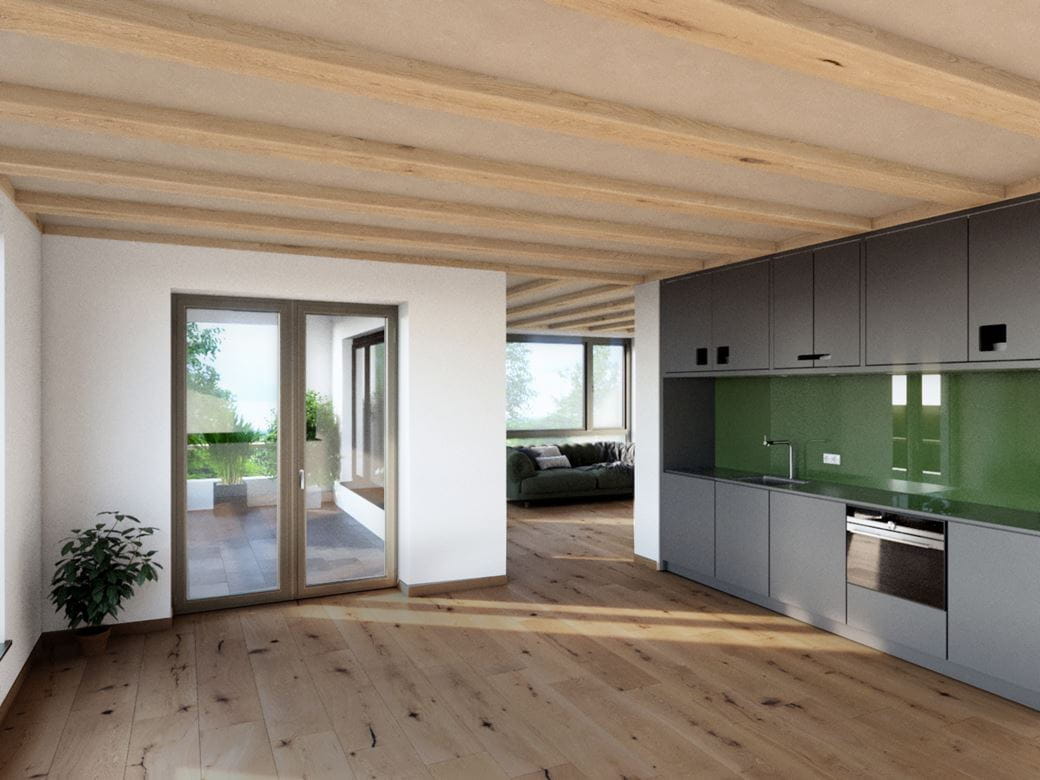The global construction industry is on the hunt for innovative solutions to reduce its large environmental footprint.
Zsolt Kohalmi, Deputy CEO & Global Head of Real Estate, (PAA) Pictet Asset Management.
Real estate’s large environmental footprint is a risk to the world’s net zero ambitions.
The sector accounts for around 40 per cent of global carbon emissions and is also responsible for numerous other ecological problems, including excessive water and power usage and the generation of waste materials.
Shifting to a greener operating model won’t be easy. But there are grounds for optimism, as the recent Klosters Forum (TKF) , a conference dedicated to sustainable real estate, amply demonstrated.
At the gathering in the Swiss Apline resort, developers investors, architects, entrepreneurs and academics came together to challenge the building industry’s established practices and set out a blueprint for change.
They offered a stirring exposition of how new technologies, construction techniques and investment could bring about sustainable transformation.
Build, destroy. Repeat?
What was immediately clear at the beginning of the conference was the sheer scale of industry’s impact on the natural world.
Delegates heard that traditional building techniques were no longer viable. They cause irreparable harm to the environment, damaging land, water and biodiversity.
Attendees also questioned whether we need new buildings in the first place.
This is because the construction phase of a building is the most environmentally taxing, representing as much as 90 per cent of embodied emissions – or the millions of tons of carbon emissions released during the lifecycle of building materials, including those that occur during extraction, manufacturing, transport, construction and disposal.
Participants suggested that developed economies, which already have enough building stock, would be better served by retrofitting and refurbishing rather than building from scratch.
Office-to-resi conversion
One smart way to retrofit, conference attendees heard, is to convert vacant office space to residential purposes and develop adaptable and mixed-use neighbourhoods.
Three years after the pandemic, some office space is still sitting empty as behavioural changes caused by Covid – lower office attendance, moving home away from cities and less shopping in office-heavy neighbourhoods – have proved persistent. At the same time, residential housing is in short supply, especially affordable ones located in the town centre.
The consultant McKinsey expects demand for office space to fall as much as 38 per cent in 2030 compared with 2019 in the most severe scenario.1 Falling demand will drive down value. In the nine cities it studied, a total of USD800 billion in value in real terms is at stake by 2030 in the moderate scenario.
This is where office-to-residential conversion starts to make sense.
Conference attendees heard property firm JLL explain why some 250 million square feet of vacant office space in the top 35 European cities could be converted to provide 500,000 new homes.2 When applying current residential capital values for each city to that vacant space, the top 10 cities could provide over EUR100 billion in investment opportunities.
These opportunities are more limited in the US. There, the large skyscrapers common in cities are wide and hence lack light, compared with European office buildings which tend to be shorter and narrower provide the natural light necessary for a conversion residential use. In London alone, where rental demand is projected to outstrip supply by more than 100,000 homes over the next decade, current vacant space could provide 43,000 flats, representing EUR21 billion in investment opportunities, estimates JLL.
But such projects have so far struggled to attract investment. Real estate investors have been reluctant to buy hybrid buildings because of the complications involved in valuing a mixed-use real estate – whether it’s office, residential or retail space.
Fortunately, that should become easier over time, TKF delegates heard. In regions like Central Europe, local authorities are increasingly promoting a concept of the “15-minute city”, where most daily necessities and services are easily accessible in one neighbourhood.
Build smart
In addition to retrofitting, the construction industry is also looking to reduce its carbon footprint by adopting smart building technologies as well as innovative and regenerative materials.
Timber has seen its popularity grow in recent years thanks to novel engineering technologies such as cross-laminated timber (CLT). There is also enthusiasm for mixing wood with other natural materials, such as earth, to improve overall performance without relying on concrete.
One company that is already using such tech is Swiss-based Rematter. TKF delegates heard how the company uses high-tech robotics to make floor slabs made of low-tech materials — timber beams with self-supporting earth infills.
Its hybrid floor slabs are as durable, sound insulating and fire resistant as concrete, while achieving 80 per cent less embodied carbon than their concrete counterparts.
In the past, earthen structures have tended to be expensive as they had to be built manually. But the firm told conference attendees how it had made the process cost competitive by combining smart product design with robotics to prefabricate its earth-timber floor slabs in a controlled environment. It also sources materials locally, reducing transportation costs and the environmental footprint.
“Even in Switzerland, earth as a raw material is very affordable and it can oftentimes be taken from excavation material,” says Götz Hilber, Rematter’s co-founder.
Earth timber structures by Rematter
© Rematter
Building more liveable and sustainable cities
Rapid urbanisation also featured prominently in debates at TKF.
Delegates heard how the world’s cities are expanding fast, incorporating an estimated 1.2 million km2 of new urban built-up area by 20303 and how this unchecked growth puts pressure on land and natural resources, increasing exposure of cities to climate and disaster risks.
Overcoming such challenges require a number of solutions, conference attendees were told, as well as better co-ordination and co-operation among urban planners, developers, governments and investors.
The urban buildings of the future must offer flexible space for working, living and playing yet must have low carbon footprints. By harnessing the intelligent building technologies and materials that are already available, that vision can become a reality.
[1] https://www.mckinsey.com/mgi/our-research/empty-spaces-and-hybrid-places#/
[2] https://www.jll.co.uk/en/trends-and-insights/research/talking-points/can-obsolete-offices-point-the-way-for-living-investors
[3] World Bank







